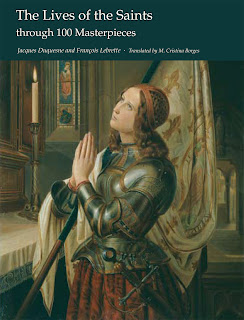Through 100 Masterpieces
Jacques Duquesne and Francois Lebrette
If your eyes glaze over when it comes to Church history, or if you picture the saints as boring or bland, two new books might help.The History of the Church Through 100 Masterpieces (Duquesne University Press, glossy paperback, 225 pages) and The Lives of the Saints Through 100 Masterpieces (Duquesne University Press, glossy paperback, 225 pages), both written by Jacques Duquesne and Francois Lebrette, were designed to tell the Catholic story through beautiful art and add color to the tapestry of faith.
Within the Catholic Church, there’s no shortage of content. From the death of St. Peter to the Council of Nicaea, from the conversion of St. Augustine to the miracle of Lepanto, artists up and down the ages have been inspired by stories, imagery, miracles, and martyrdom.
But for people without any background, this artwork can be confusing. If you’re like me, you look at classic paintings and at least acknowledge that they are beautiful works of art. But the deeper meaning and heritage is hazy at best. It’s this fog that Duquesne and Lebrette hope to clear away through their books.
Both books are undoubtedly beautiful, but I have a couple hangups. First, the authors provide a cultural background for each piece, setting it in context, but they rarely give information on the meaning and symbols within the painting. For instance, they’ll show a portrait of St. Teresa of Avila and instead of noting why her hands and eyes were depicted in certain ways, the authors just include a short biography of her life. This makes the content more history than art theory–not necessarily bad, just not what I expected.
My second issue is that the authors approach the topics from a somewhat detached perspective. It’s not so much a Catholic study of art as it’s a study of Catholic art. That difference is subtle, yet important. There’s little mention of Christ anywhere in the commentaries, and the authors neglect the saint’s spiritual background. They also wobble on the Resurrection and the divinity of the Church.
Nevertheless, both books are attractively produced with glossy paper and vibrant colors. They would make for good coffee-table books. However, if you’re looking for faithful Church history or artistic theory, you might turn elsewhere.

